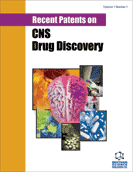Abstract
This review discusses a family of receptors that interact with a family of small peptides that belong to the tachykinin family. The three subtypes of tachykinin receptors follow the following suggested nomenclature: NK1, NK2 and NK3. These receptors belong to the 7-transmembrane, G-protein coupled family. The NK receptor family has been implicated in a wide range of disorders, cancers, inflammation and neural-related diseases. The tachykinin NK receptors and their ligands have been implicated in solid and hematological tumors. Antagonists to NK receptors have been synthesized and some have been tested in preclinical and Phase II clinical studies. However, in order to be effective for treatment, it is imperative to understand the biology of NK receptor family as well as related molecules. One such molecule is HGFIN, also referred as nmb and osteoactivin. HGFIN is particularly relevant since it has been shown to interact with the high affinity ligand of NK1, substance P. This report discusses promising applications for targeting the NK receptors. The discussion proposes potential mechanisms that could occur when substance P interacts with HGFIN as well as the role of HGFIN when antagonists are used to block the NK receptors. This review is relevant for central and peripheral nervous system drug development and cancer targets and also discusses the indications for current patents.
Keywords: Bone marrow, cytokines, hematopoiesis, HGFIN, neurokinin receptors, neurotransmitters, nmb, neurokinin-A, Preprotachykinin, substance P, Tachykinins, Tachykinergic System, HGFIN
 10
10





















